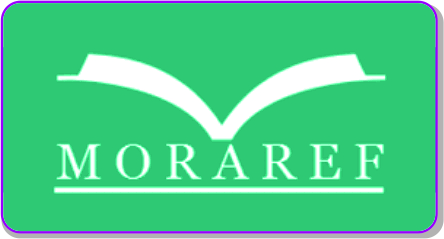Is Arabic Worth to Teach?
DOI:
https://doi.org/10.30983/mj.v3i1.6304Keywords:
religious identity, motivation, modern standard arabic, classical arabicAbstract
Abstract
This research is a form of literature review that is part of my research that aims to investigate the views of Muslims in West Sumatra (Minangkabau Society) towards the Arabic language and how it drives their motivation to learn it. The lack of research on this issue in Indonesia, especially in the West Sumatran region, is the starting point of this study. In fact, a series of studies with the same theme have been conducted in various parts of the world such as in the United States (Belnap, 1987; Brosh, 2013; Husseinali, 2005, 2006; Nichols, 2014; Seymour-Jorn, 2004; Taha, 2007), Canada (Belnap, 1987), Malaysia (Abu et al., 2010; Aladin, 2010, 2013), Saudi Arabia (Al-Osaimi & Wedell, 2014), and the United Kingdom (Jaspal & Coyle, 2010). In terms of identity background, learners who establish some form of connection with the Arabic language are referred to as heritage learners (Brosh, 2013). I can conclude that religious identity is the strongest background that maintains Muslims' close relationship with Arabic.
Abstrak
Penelitian ini merupakan bentuk kajian pustaka yang merupakan bagian dari penelitian saya yang bertujuan untuk menyelidiki pandangan umat Islam di Sumatera Barat (Masyarakat Minangkabau) terhadap bahasa Arab dan bagaimana hal tersebut mendorong motivasi mereka untuk mempelajarinya. Minimnya penelitian tentang isu ini di Indonesia, khususnya di wilayah Sumatera Barat, menjadi titik tolak penelitian ini. Padahal, serangkaian penelitian dengan tema yang sama telah dilakukan di berbagai belahan dunia seperti di Amerika Serikat (Belnap, 1987; Brosh, 2013; Husseinali, 2005, 2006; Nichols, 2014; Seymour-Jorn, 2004; Taha, 2007), Kanada (Belnap, 1987), Malaysia (Abu dkk., 2010; Aladin, 2010, 2013), Arab Saudi (Al-Osaimi & Wedell, 2014), dan Inggris (Jaspal & Coyle, 2010). Dalam hal latar belakang identitas, pelajar yang menjalin hubungan dengan bahasa Arab disebut sebagai pelajar warisan (Brosh, 2013). Saya dapat menyimpulkan bahwa identitas agama merupakan latar belakang terkuat yang mempertahankan hubungan erat umat Islam dengan bahasa Arab.
References
Abd al-Tawwab, R. (1999). Fushul fi Fiqh alLughah (6th ed.). Cairo: Maktabah al-Khanijy.
Abdelali, A. (2004). Localization in Modern Standard Arabic. Journal of the American Society for Information Science and Technology, 55(1), 23–28. https://doi.org/10.1002/asi.10340
Adelaar, K. A., & Himmelmann, N. (eds ). (2013). The Austronesian Languages of Asia and Madagascar. Routledge.
Ajape, K. O., Mamat, A., & Azeez, Y. A. (2015). Students’ Motivation and Attitude towards the Learning of Arabic Language: A Case Study of Arabic Students in Nigerian Universities. International Journal of Economics and Financial Issues, 5(1S), 122–127.
Aladdin, A. (2010). Non-Muslim Malaysian learners of Arabic (NMMLAs): an investigation of their attitudes and motivation towards learning Arabic as a foreign language in multiethnic and multicultural Malaysia. Procedia - Social and Behavioral Sciences, 9, 1805–1811. https://doi.org/10.1016/j.sbspro.2010.12.404
Aladdin, A. (2013). Demotivating Factors in the Arabic Language Clasroom: What Demotivates non-Muslim Malaysian Learners when it Comes to Learning Arabic? Procedia - Social and Behavioral Sciences, 93, 1652–1657. https://doi.org/10.1016/j.sbspro.2013.10.096
Al-Osaimi, S., & Wedell, M. (2014). Beliefs about second language learning: the influence of learning context and learning purpose. The Language Learning Journal, 42(1), 5–24. https://doi.org/10.1080/09571736.2012.661753
Badawi, E. S., Carter, M., & Gully, A. (2015). Modern Written Arabic: A Comprehensive Grammar (2nd ed.).
Bakar, K. A., Sulaiman, N. F., & Rafaai, Z. A. M. (2010). Self-Determination Theory And Motivational Orientations Of Arabic Learners: A Principal Component Analysis. GEMA Online® Journal of Language Studies, 10(1). Retrieved from http://ejournal.ukm.my/gema/article/view/127
Belnap, R. K. (1987). WHO’S TAKING ARABIC AND WHAT ON EARTH FOR? A Survey Of Students in Arabic Language Programs. Al-’Arabiyya, 20(1/2), 29–42. Retrieved from JSTOR.
Brosh, H. (2013). Motivation of American college students to study Arabic. International Journal of Humanities and Social Science, 3(19), 27–38.
Dhayf, S. (1960). Tarikh al-Adab al-’Araby (24th ed.). Dar el-Ma’arif.
Grewal, Z. (2013). Islam Is a Foreign Country: American Muslims and the Global Crisis of Authority. NYU Press.
Haeri, N., & ḤÄ’irÄ«, N. (2003). Sacred Language, Ordinary People: Dilemmas of Culture and Politics in Egypt. Palgrave Macmillan.
Husseinali, G. (2005). Why Are You Learning Arabic? Orientations, Motivation and Achievement. Retrieved from https://eric.ed.gov/?id=ED532415
Husseinali, G. (2006). Who is Studying Arabic and Why? A Survey of Arabic Students’ Orientations at a Major University. Foreign Language Annals, 39(3), 395–412. https://doi.org/10.1111/j.1944-9720.2006.tb02896.x
Jaspal, R., & Coyle, A. (2010). “Arabic is the language of the Muslims–that’s how it was supposed to beâ€: exploring language and religious identity through reflective accounts from young British-born South Asians. Mental Health, Religion & Culture, 13(1), 17–36. https://doi.org/10.1080/13674670903127205
Kementerian Agama RI. (2014). Lampiran Keputusan Menteri Agama Republik Indonesia, No: 165/2014 Tentang Kurikulum 2013 Mata Pelajaran Pendidikan Agama Islam dan Bahasa Arab di Madrasah. Kementerian Agama RI.
Yuspita, Y. E., Minova, P. N., & Ansara, A. D. P. (2022). Selection Of Internet Provider To Improve Quality Of Service And Learning Using Decision Support System. Jurnal Mantik, 6(1), 105–111.
Mukhtar Omar, A. (2008). Mu’jam al-Lughah al-Arabiyyah al-Mu’ashirah. عالم الكتب،.
Mustafa, I. (1990). al-Mu’jam al-Wasith. Dar al-Da`wah.
Nichols, D. J., & College, K. (n.d.). The Arabic Language Fog of War: Exploring Iraq War Veterans’ Motivations to Study Arabic Language and Culture Post-Deployment. 36.
Peek, L. (2005). Becoming Muslim: The Development of a Religious Identity. Sociology of Religion, 66(3), 215–242. https://doi.org/10.2307/4153097
Ryding, K. C. (2005). A Reference Grammar of Modern Standard Arabic (Reference Grammars). Cambridge University Press.
Salih, S. (2009). Dirasat fi Fiqh al-Lughah (2nd ed.). Beirut: Dar al-Ilmi al-Malayin.
Seymourâ€Jorn, C. (2004). Arabic language learning among Arab immigrants in Milwaukee, Wisconsin: a study of attitudes and motivations. Journal of Muslim Minority Affairs, 24(1), 109–122. https://doi.org/10.1080/1360200042000212205
Taha, T. A. (2007). Arabic as" a critical-need" foreign language in post-9/11 era: A study of students’ attitudes and motivation. Journal of Instructional Psychology, 34(3), 150–161.
Wafi, A. A. al-Wahid. (2004). Fiqh al-Lughah (Vol. 3). Cairo: Nahdetmisr.
Ya’qub, E. B. (1982). Fiqh al-Lugah al-’Arabiyyah wa Khasaisuha (1st ed.). Beirut: Dar al-Ilmi al-Malayin.
Downloads
Submitted
Accepted
Published
Issue
Section
License
Authors who publish with this journal agree to the following terms:
- Authors retain copyright and grant the journal right of first publication with the work simultaneously licensed under a Creative Commons Attribution License that allows others to share the work with an acknowledgment of the work's authorship and initial publication in this journal.
- Authors are able to enter into separate, additional contractual arrangements for the non-exclusive distribution of the journal's published version of the work (e.g., post it to an institutional repository or publish it in a book), with an acknowledgment of its initial publication in this journal.
- Authors are permitted and encouraged to post their work online (e.g., in institutional repositories or on their website) prior to and during the submission process, as it can lead to productive exchanges, as well as earlier and greater citation of published work (See The Effect of Open Access).









